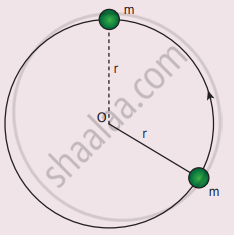Advertisements
Advertisements
प्रश्न
Define the following:
Law of conservation of energy
उत्तर
The law of conservation of energy states that energy can neither be created nor destroyed. It may be transformed from one form to another but the total energy of an isolated system remains constant.
APPEARS IN
संबंधित प्रश्न
A body of mass 4 m is lying in xy-plane at rest. It suddenly explodes into three pieces. Two pieces each of mass m move perpendicular to each other with equal speed v. The total kinetic energy generated due to explosion is ______
A particle is placed at the origin and a force F = kx is acting on it (where k is a positive constant). If U(0) = 0, the graph of U(x) versus x will be (where U is the potential energy function)
Write the differences between conservative and Non-conservative forces. Give two examples each.
A bob of mass m is attached to one end of the rod of negligible mass and length r, the other end of which is pivoted freely at a fixed center O as shown in the figure. What initial speed must be given to the object to reach the top of the circle? (Hint: Use law of conservation of energy). Is this speed less or greater than the speed obtained in section 4.2.9?

Which of the following statements is true for commercial sources of energy?
Which of the following has the largest source of power in India?
Which of the following is a commercial source of energy?
Compact fluorescent lamp (CFL) consumes ______ percent less power than ordinary bulb?
What problems are being faced by the power sector in India?
Why infrastructure needs to be upgraded?
